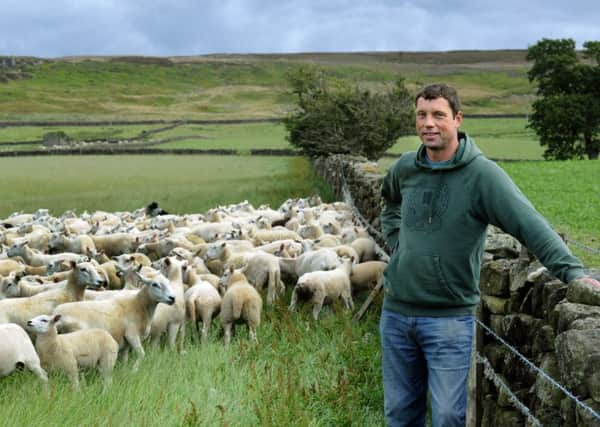Red tape victory eases livestock movement form filling


The changes cut unnecessary red tape and reduce time invested by farmers on excessive form filling, the Government said.
Under a new scheme, to be phased in over 12 months, all farmers will be able to move their animals around any land they have registered and are using within a 10-mile radius of their home farm without the need for reporting, or ‘standstills’.
Advertisement
Hide AdAdvertisement
Hide AdExisting animal movement rules mean many farmers must report livestock movements to any other land they own or rent beyond a five-mile radius. The reporting automatically triggers a six-day lockdown - or ‘standstill’ - on the farm during which time no animals can be moved.
There is also a raft of different rules for sheep, cattle and pigs under a complicated web of schemes, including the Cattle Tracing System Links and Sole Occupancy Authorities, but these too will be removed.
The new system for registering land on which livestock are kept will be run jointly by the Animal and Plant Health Agency and the Rural Payments Agency.
The Government said the changes will improve information about animal movements and land being used for livestock production - details which are vital for helping to prevent and control diseases.
Advertisement
Hide AdAdvertisement
Hide AdFarming Minister Mr Eustice said: “Farming is a fundamental part of our rural economy, producing food, providing jobs and generating over 100 billion a year for our economy.
“But our farmers often face overly complex rules and regulations. Making it simpler for them to understand what they need to do will help them follow the rules and improve our disease control capability by ensuring better information on animal locations is being recorded on Defra’s livestock location database.
“When a disease outbreak occurs, knowing where animals have been is fundamental to containing and eliminating it.”
North Yorkshire farmer Richard Findlay, the regional livestock board chairman for the National Farmers’ Union, said the changes are a direct result of sustained work by the union and farmers in England and Wales.
Advertisement
Hide AdAdvertisement
Hide AdMr Findlay, who farms at Westerdale, near Whitby, on the North York Moors, said: “This is a massive result for hard-pressed livestock farmers that will make the job much more straightforward without any loss of traceability and disease control measures.
“The amount of red tape facing farmers across all sectors is huge and was well-documented in the McDonald Review of 2011. Five years on it is still one of the main issues identified by farmers as a barrier to farm business development.
“This announcement is certainly a significant milestone that will help make movement paperwork much more streamlined, reducing the ever-present burden of movement recording and making farm management much more straightforward on a day-to-day basis.”
While the changes are welcome, the new system will take time to bed in, warned National Sheep Association chief executive Phil Stocker.
Advertisement
Hide AdAdvertisement
Hide Ad“While solving many of the current complexities, the new system will take time to implement and producers will have to wait to be contacted by Defra/APHA as the changes are rolled out across England by late summer 2017 - but I urge all sheep keepers to get their head around the changes now,” Mr Stocker said.
“They need to establish if they want to merge holdings, and how this will affect future ear tag orders. I’d also urge producers to consider if the new rules for temporary land use affect them.”